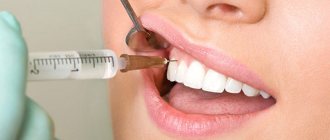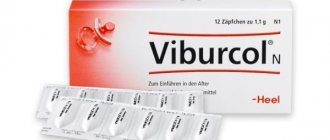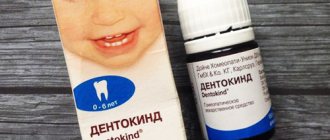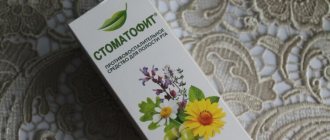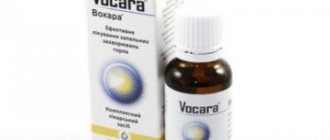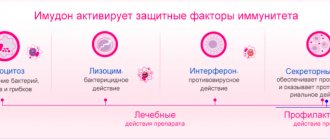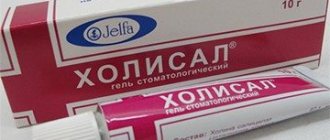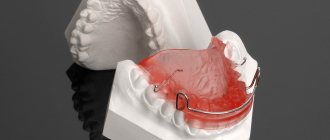Safe painkillers for children: effective drugs
Can I give my child painkillers? Adherents of naturalness are confident that the unpleasant symptoms of any infant disease can be stopped with the help of maternal affection alone, but their arguments are unlikely to seem convincing to those whose baby is crying because of teething or colic in the stomach. Is it worth solving the problem with analgesics, or would it be wiser to look for an alternative to medications?
Indications for the use of painkillers for children
Over the past few years, the pharmaceutical industry has made great strides, thanks to which many painkillers have appeared in pharmacies that can be safely given even to infants. Most of these drugs additionally contribute to:
- decrease in body temperature;
- relieving inflammation;
- elimination of edema.
However, even a special medicine for newborns can cause harm to a child’s fragile body if its help is used too often. You can’t do without such tools when:
Each of the listed cases is a direct indication for giving the baby painkillers. When should you not do this?
When is taking painkillers contraindicated?
Pain is the surest signal that something is wrong with one of the internal organs.
It is this symptom that allows you to most accurately and quickly recognize the clinical picture of many dangerous diseases and begin treatment in a timely manner.
The sensation relieved with the help of an analgesic will be “smeared,” which will greatly complicate the diagnosis and will not allow determining the moment when the patient’s condition worsened.
That is why it is very dangerous to arbitrarily give any drugs to children complaining of headaches or abdominal discomfort. These symptoms may be signs of:
Does your child often have a headache or stomach ache, but the examination did not reveal any health problems? In this case, parents should consult with their doctor about choosing an appropriate analgesic. Only a specialist will be able to determine which drug will be safe for a particular child.
What requirements must pediatric painkillers meet?
Basic requirements for such drugs:
- quick effect;
- long-term exposure without accumulative effect;
- low risk of adverse reactions;
- Availability of a dosage form suitable for children.
Which analgesic release form should I choose for my child?
Which form of medication to choose depends on the age of the child:
| Age | Recommended dosage form | Advantages |
| Up to 3-6 months | Rectal suppositories (suppositories) | There is no risk of injuring the sensitive gastrointestinal tract |
| 1-7 years | Liquid (syrups, suspensions) | Easy to give to children thanks to a wide range of flavors and aromas, no difficulty in swallowing |
| 7-12 years | Tablets, powders | High concentration of active ingredient, easier to choose the right dosage |
The best pain medications for newborns and older children
Determining which children's pain reliever is best is difficult. According to international clinical studies, the most effective analgesic for babies is Ibuprofen, but it can only be used when the child reaches six months. Paracetamol, which is in second position in the rating, is allowed from 3 months, but an overdose is fatal.
To choose the analgesic that is most suitable for their child, responsible parents will have to comprehensively study the modern pharmaceutical market. What painkillers are there?
Tablet form
- Ibuprofen. Long-acting tablets with additional anti-inflammatory effect. Coping with pain of various origins. Do not cause side effects.
- Paracetamol. Broad-spectrum pain reliever with a strong antipyretic effect. It is not recommended for frequent and long-term use due to the strong effect on the patient's liver.
- Nimesulide. A drug with a strong long-term (up to 12 hours) analgesic effect. Indicated for teething. It can be given to children strictly as prescribed by a doctor.
- Analgin (we recommend reading: how to give Analgin to children: instructions for use). The only available alternative to Ibuprofen and Paracetamol if they are ineffective. When taken by children, the drug often causes side effects. Not recommended for children under 3 years of age.
Syrups, drops, suspensions
- Ibuprofen and Paracetamol, the packaging of which contains the indication “for children”. The properties of the suspension and syrup are similar to the drugs of the same name in tablet form.
- Nurofen for children - syrup and suspension. The closest analogue of Ibuprofen. Indicated for use in teething, mild headaches, ear and muscle pain. Reduces body temperature.
- Nise, suspension. Moderate analgesic effect, occurring 2 hours after taking the medicine and lasting up to 12 hours. The drug is contraindicated in children under 2 years of age, as well as in patients with heart, stomach and kidney diseases.
- Canephron N, drops (more details in the article: Canephron drops for children: instructions for use). A strong pain reliever based on natural herbal ingredients. Suitable for treating problems with the genitourinary system. The drug is not recommended for children under 6 years of age.
Rectal suppositories
- Efferalgan, Panadol and other paracetamol-based suppositories. They have a pronounced antipyretic effect. They can be used from birth, but they should only be used as prescribed by a doctor.
- Viburcol. Fast-acting homeopathic suppositories based on herbal ingredients. Have no side effects. Good for pain caused by teething.
Products for external use
- Panthenol and Bepanten, gels and sprays. Relieves pain from external skin damage (burns, injuries, diaper rash). Suitable for children of different ages. Contraindicated if you are prone to allergic reactions.
- Kamistad, gel (we recommend reading: how is Kamistad children's gel used?). Instantly acting remedy indicated for teething. It has a short-term effect (pain relief lasts no more than 10 minutes).
- Cholisal, gel. A fast-acting drug intended for application to the gums for toothache. It does not contain sugar, so it can be used for babies suffering from atopic dermatitis.
Non-drug methods for eliminating pain in children
In cases where the use of analgesics in one form or another is contraindicated for a child, parents can use alternative methods to relieve an attack of pain. For children under 3 years of age it will help:
- light relaxing massage;
- method of switching attention;
- ethnoscience.
With older children, you can try breathing exercises and various relaxation exercises. The main thing is to create maximum comfort for the child, make sure that he empties his bowels in advance, takes a comfortable position and completely relaxes.
8 best painkillers
Drugs that eliminate or reduce the feeling of pain are called analgesics. They are divided into 2 main groups: narcotic and non-narcotic. Each group has its own mechanism of action on the human body.
The drugs differ in intensity, composition and purpose. But they have one thing in common: painkillers do not affect the cause of pain, but eliminate the symptom itself.
In this article you will learn the features of drugs in each group, their differences, advantages and disadvantages.
Which brand of painkiller should I choose?
We have compiled a rating of pharmaceutical companies that use high-quality, purified raw materials and the latest technologies in the production of painkillers:
1.Grodzisk Pharmaceutical
3. Reckitt Benckiser
Nurofen
The drug is used for moderate and mild pain syndrome. The active component, ibuprofen, inhibits the synthesis of prostaglandins.
The drug contains small amounts of codeine, a narcotic substance that acts on the receptors of the central nervous system and has an analgesic effect. In addition, the medicine relieves fever, inflammation, and cough syndrome.
Indications: pain of various origins (dental, rheumatic, headache, etc.), migraine, myalgia, fever due to ARVI, influenza, etc. Available in tablets, suppositories, suspensions and in the form of a gel.
Advantages:
- a line of drugs for children was released;
- convenient release form;
- has a combined effect on the body: relieves pain, fever and inflammation;
- is quickly absorbed - reduces pain sensitivity after 15 minutes.
Flaws:
- there are contraindications: cardiac, respiratory, renal failure, hemophilia, leukopenia, hypersensitivity, etc.;
- possible side effects: insomnia, allergies, anemia, nausea, heartburn, etc.
Promedol
The medicine is an effective painkiller and is prescribed for severe pain. The active ingredient is trimeperidine. The drug reduces the excitability of nerve cells and the conductivity of impulses, resulting in an analgesic effect. Available in tablets and injections.
Advantages:
- increases the threshold of pain sensitivity;
- rapid action - the analgesic effect occurs after 15 minutes;
- due to its high efficiency, the drug is especially often used in surgery (for fractures, to prevent painful shock, for anesthesia), obstetrics (as an analgesic, as a stimulant of sluggish labor), oncology;
- safe for newborns;
- has a moderate antispasmodic effect.
Flaws:
- inhibits conditioned reflexes, slows down the reaction rate;
- addictive;
- prescription required;
- duration of action is only 2-4 hours;
- the drug has a moderate hypnotic effect, so it is not recommended for people whose work requires increased attention.
Tramadol
The drug is used for severe and moderate pain, incl. inflammatory, vascular, traumatic, as well as in oncology.
The drug is inferior in degree of action to codeine and morphine, but is still highly effective, with a quick and long-lasting effect. The active component, tramadol, inhibits the conduction of nerve impulses.
Dosage form: capsules, solution, drops, suppositories, tablets.
Advantages:
- strong analgesic activity;
- convenient release forms;
- long and quick effect;
- well tolerated and does not depress respiration, blood circulation and gastrointestinal function like many opioid drugs;
- has an antitussive effect.
Flaws:
- addictive, addictive;
- rarely causes the following undesirable reactions: nausea, dizziness, vomiting;
- inferior in activity to morphine, codeine;
- the drug has a sedative effect, so it is not recommended for people whose activities require increased attention.
Ketanov
The drug is a powerful non-steroidal analgesic that is used for severe and moderate pain.
The active component, ketorolac, inhibits the synthesis of prostaglandins, which modulate pain sensitivity, inflammation and thermoregulation.
Indications: pain during oncology, tooth extraction, fractures, bruises, soft tissue damage, menstruation; postoperative period, after childbirth, etc. Available in the form of a solution and tablets.
Advantages:
- refers to potent painkillers and has a wide range of uses;
- there is no dependence;
- the potency of action is comparable to morphine, but unlike it does not have sedative, anxiolytic effects, and also does not depress the respiratory system;
- is an excellent analogue of opioid analgesics;
- fast action - in a quarter of an hour.
Source: https://travnik33.ru/simptomatika/bezopasnye-obezbolivayushhie-tabletki-dlya-detej-effektivnye-preparaty
Bupivacaine is a local anesthetic
Bupivacaine (marcaine, sensorcaine, LAC 43).
First mentioned in 1963. It is 3-4 times more powerful than lidocaine and lasts much longer. Its onset of effect is slower than that of lidocaine or mepivacaine. Can be used for all types of local and regional anesthesia. The development of anesthesia depends on the diameter and degree of myelination. Sensitivity disappears in the following sequence: autonomic, pain, temperature, tactile, proprioceptive, and then muscle tone disappears.
Mechanism of action of local anesthetics
The drug is especially popular during long-term blockades; in this case, tachyphylaxis does not occur and effective and safe analgesia occurs. Cases of motor block are rare.
Less than lidocaine causes vasoconstriction. Poorly penetrates the placenta. Never combine it with adrenaline - the block is already long enough. When it enters the vascular bed, it has cardiotoxicity to a greater extent than other local anesthetics - it causes a block of sodium channels in myocytes, a more pronounced decrease in contractility and conductivity of the myocardium.
Dosage:
- for infiltration and peripheral nerve block - 0.25-0.5% solutions;
- for intravenous regional anesthesia - 0.25% solutions;
- for epidural bolus 0.25-0.75% solutions;
- for infusion into the epidural space - 0.0625-0.125% solutions;
- for spinal anesthesia - 0.7 5% solutions.
Onset of action: infiltration - 2-10 minutes, epidural - 4-7 minutes, spinal - less than 1 minute. Peak effect: infiltration/epidural - 30-45 minutes, spinal - 15 minutes. Duration of action: infiltration/epidural/spinal - 200 - 400 minutes.
The maximum safe dose is 2 mg/kg without adrenaline and 2-3 mg/kg with adrenaline. Epinephrine increases the duration of effect at bupivacaine concentrations greater than or equal to 0.5%.
Not recommended in obstetrics (bradycardia in the fetus). Concentrations above 0.5% have severe cardiotoxicity.
Painkiller for children: types, mechanism of action, adverse reactions
Diseases, injuries or natural teething are accompanied by painful sensations. A baby experiencing an unpleasant symptom begins to cry loudly and the parents’ task is to alleviate his suffering. Analgesics for children will help cope with this task.
Products for children
To help the child, painkillers are used without waiting for a doctor’s recommendation. Fortunately, the analgesic is sold in every pharmacy.
When giving analgesics to children, it is important to adhere to the instructions, observing the dosage, maintaining the required interval between doses of the medication.
Analgesics relieve pain, reduce fever, relieve swelling and other manifestations of the inflammatory process.
General tips for taking pain medications for children
It is necessary to give the child analgesics in the following cases:
- ARVI, otitis media, influenza, accompanied by fever, pain in the head and abdomen;
- eruption of baby teeth;
- disruption of the gastrointestinal tract;
- colic, increased gas formation (in infants);
- injuries;
- exacerbation of congenital pathology.
If cutting teeth is painful, an analgesic is used. In case of a fracture or severe bruise, when the help of a doctor is necessary, they give painkillers, after which they call an ambulance.
What types of painkillers are there for children?
- Non-steroidal anti-inflammatory drugs based on ibuprofen act at the enzymatic level, providing pain relief at the beginning.
- Analgesics that relieve fever, based on paracetamol, relieve pain, reduce temperature, affecting the pain center in the brain.
- Local remedies do not allow the pain to “spread” from the source. Interrupting the pain impulse, they calm her down.
How do analgesics work?
The drugs have antipyretic, anti-inflammatory, analgesic effects. The mechanism of action is due to inhibition (inhibition) of the synthesis of prostaglandins - mediators of pain, inflammation, hyperthermic reaction. The platelet concentration does not increase, which reduces the risk of blood clots. The effect of the analgesic lasts from 4 to 12 hours.
Requirements for children's analgesics
- convenient dosage form: gel, ointment, mixture, suspension, solution;
- minimum contraindications, side effects;
- the ability to quickly and permanently relieve pain;
- the active ingredients are removed without accumulating in soft tissues.
For newborns and children up to 1 year
When a baby in his first year of life cries and screams, he needs the help of his parents. Having correctly calculated the dosage, the following forms of analgesics are used:
- for newborns who still have difficulty swallowing, rectal suppositories are placed: Efferalgan;
- starting from 6 months, they give aromatic sweet syrups, suspensions: Paracetamol, Nurofen, etc.
Safe painkillers
- Rectal suppositories rarely cause nausea or other side effects. After insertion, the child is fixed in a position lying on his side (for 10 minutes), squeezing his buttocks.
- suspensions, syrups - convenient forms of analgesics, taken after meals;
- tablets, powders act quickly and for a long time;
- ointments, gels have a local analgesic effect;
- sprays help with burns;
- lozenges;
- drops.
Painkillers for children
Tablets, powders, capsules are prescribed to teenage children. If Paracetamol tablets are prescribed to a child under 3 years old, the analgesic is crushed to a powder state. Before giving, stir with water.
Interesting: Headache in a 3-year-old child: causes, treatment, prevention
External means
When the baby is teething, his suffering is alleviated with the help of external analgesics. To do this, rub an ointment or gel (Kalgel, Cholisal, etc.) into the inflamed gum.
For itchy skin, infants and older children are prescribed a cream or spray: Bepanten, Panthenol.
Syrups
Syrups are an analgesic for children from six months. Children take the aromatic, sweet drug with pleasure. Sometimes the analgesic in syrup form causes nausea.
Suppositories
Safe pain relievers include rectal suppositories. Because suppositories are inserted into the anus. In addition, the risk of side effects is minimal.
List of the most popular drugs
Paracetamol (Panadol, Efferalgan, etc.) – relieves headaches, toothaches, pain after injury, relieves fever and inflammation. Suitable for babies from 3 months. It acts in 20 minutes, achieving effect in half an hour. The effect lasts almost 6 hours.
Ibuprofen (Nurofen) – in the form of a suspension is approved for children from 3 months. No less effective than paracetamol. It has a pronounced analgesic and antipyretic effect. The use of NSAIDs is prescribed during teething. The analgesic takes effect 30 minutes after administration, and the effect is achieved after 2 hours.
Nimesulide (Nise) – suitable for children over 2 years of age. Calculated: 1.5 mg/kg. The active substance works in 30 minutes, the effect is achieved in 1.5 hours. The analgesic lasts for 12 hours. Prescribed for injuries and teething. Not suitable for reducing temperature.
When should you not give painkillers to children?
The use of analgesics is strictly prohibited if the following conditions are detected:
- liver diseases;
- hormonal imbalances;
- constipation causing abdominal pain;
- poisoning: nausea, diarrhea, vomiting and other symptoms;
- predisposition to allergic reactions;
- abdominal pain of unknown origin;
- head injury;
- severe sore throat;
- purulent discharge from the ear;
- gums are swollen, teeth hurt, cheek is swollen;
- at the same time: headache, drowsiness.
Adverse reactions after use
- abdominal pain, vomiting;
- loss of appetite, flatulence;
- decreased hearing or vision;
- headache, sleep disorder;
- hives.
Traditional methods of pain relief
- to relieve fever and muscle pain, rub with vodka;
- pain from a bruise will be relieved by a compress of grated horseradish and honey;
- the headache will go away if you apply a fresh, pre-crushed cabbage leaf.
Few people think that pain relief does not solve the problem, but sometimes leads to serious complications. The pain syndrome does not appear on its own, but signals that there has been a malfunction in the functioning of the small organism.
Therefore, before using such products, the child is shown to the pediatrician.
( 1 rating, average 5 out of 5 )
Source: https://golovaibolit.ru/golovnaya-bol-u-detej/analgetiki-dlya-detej
What analgesics are best for children?
The choice of painkillers is wide. However, when it comes to treating children, the choice of analgesics is significantly narrowed. This is due to the characteristics of the child’s body: the functioning of the liver, kidneys and gastrointestinal tract. In this article we will talk about painkillers that can be used by children.
What are analgesics
In medical practice, there are two types of painkillers: non-narcotic and narcotic.
Non-narcotic painkillers are non-steroidal anti-inflammatory drugs (NSAIDs): paracetamol, diclofenac, nimesulide, ketoprofen, analgin, piroxicam and others. They do not have addictive potential and do not cause a psychoactive effect.
Nonsteroidal anti-inflammatory drugs are used in almost all medical fields: neurology, traumatology, rheumatology, surgery, nephrology, pulmonology, including in pediatrics for the treatment of inflammatory diseases in children.
Narcotic painkillers get their name because they activate the same structures in the brain that drugs do.
They have addictive potential – when consumed non-medically, they cause physiological and psychological dependence.
Most often, narcotic analgesics are used in anesthesiology to prepare the patient for anesthesia and surgery, pediatric oncology, pediatric rheumatology, traumatology and palliative surgery.
Non-steroidal anti-inflammatory (non-narcotic) drugs block the enzyme cyclooxygenase, which stimulates the production of prostaglandins - strong inflammatory mediators.
Prostaglandins cause inflammatory reactions in the body: swelling, pain, increased temperature at the site of inflammation and redness.
NSAIDs make sure that these effects are blocked and inflammation is inhibited, including pain.
Narcotic painkillers activate opioid receptors - mu, delta, kappa and nociceptive. Activation of these receptors leads to strong pain relief, develops a sedative and calming effect, and can have a hypnotic and anti-anxiety effect.
The most terrible consequence is irreversible mental degradation
It is necessary to recognize addiction as early as possible and begin to treat it.
Analgesics cause various side effects. Some of them, for example, analgin (metamizole sodium), have high toxicity and lead to changes in the blood, so it is rarely used in children.
The pyrazolone NSAID metamizole (sodium), extremely popular in the Russian Federation in the treatment of various pain and hyperthermic conditions in adults, can lead to agranulocytosis. For this reason, metamizole is prohibited for use in many countries around the world.”
To ensure that the use of painkillers does not have severe side effects, doctors try to adapt to the physiology of the child’s body: they need to balance between a minimum of side effects and ensuring that the medicine eliminates the pain syndrome. Therefore, the choice of painkillers is greatly limited. Below we will analyze non-narcotic and narcotic analgesics that are used for children in pediatrics and anesthesiology.
Nonsteroidal anti-inflammatory drugs
The World Health Organization considers the best non-narcotic painkillers for children to be ibuprofen and paracetamol. These drugs meet the criteria for safety and effectiveness in the treatment of inflammatory diseases in children.
Ibuprofen and paracetamol are used for:
- juvenile rheumatoid arthritis
- acute respiratory viral infections
- osteochondrosis
- fever and hyperthermia
- systemic lupus erythematosus
- pain syndromes with arthralgia, myalgia, bursitis, tendonitis, bruises, dislocations, sprains
- postoperative pain syndrome
- teething
- ENT diseases: pharyngitis, laryngitis, otitis
Ibuprofen can be used when the child reaches three months of age. Since the use of some forms (tablets, suspensions, capsules) is difficult, for example, when a child spits up, ibuprofen is available in the form of rectal suppositories (suppositories). This route of drug administration allows for effective pain relief. The dose of ibuprofen and paracetamol is determined by the attending physician.
Ibuprofen and paracetamol are contraindicated in children with severe liver, kidney and blood diseases. It is not recommended to use these drugs in combination with barbiturates, as the risk of liver damage increases.
Opioid painkillers are used in children in two cases: to relieve severe pain that is not relieved by NSAIDs, and to prepare the child for surgery.
In the first case, narcotic analgesics are used in emergency care, when it is necessary to immediately relieve intense pain.
Short-acting morphine, diamorphine, and hydromorphone are used to treat moderate to severe pain and breakthrough pain.
There are narcotic painkillers that are not prescribed to children at all, regardless of the strength and cause of the pain: promedol and butorphanol, nalbuphine. Depending on the situation and with the consent of the doctor, tramadol and codeine can be used.
If the child has intense chronic pain, another narcotic painkiller is used - long-acting fentanyl patches.
Indications for the use of narcotic painkillers in children:
- neuropathic pain
- pain associated with medical procedures
- cancer pain
- pain in children with human immunodeficiency virus
- pain at the end of life (in palliative practice)
- pain from severe injuries when non-narcotic painkillers have not been effective
In the second case, when preparing children for surgery, the following opioid analgesics are used: morphine, fentanyl, remifentanil, sufentanil, promedol and tramadol.
Conclusion
Due to the characteristics of the children's body, the choice of analgesics for children is limited. In children, non-narcotic (non-steroidal anti-inflammatory drugs) and narcotic painkillers (opioid analgesics) are used.
NSAIDs are used in children with inflammatory diseases that are accompanied by pain. WHO recognizes two drugs - ibuprofen and paracetamol: they are considered safe and effective.
Narcotic painkillers are used when NSAIDs have failed and for analgesia while preparing the patient for medical interventions.
Bibliography:
Source: https://nasrf.ru/baza-znaniy/vopros-otvet/kakie-analgetiki-luchshe-ispolzovat-dlya-detey
What painkillers can children take?
Safe painkillers for children must have a special dosage form and active substance with minimal side effects on the young body. The requirements for the funds are:
- the ability to quickly achieve the desired concentration;
- pain relief in the shortest possible time;
- long lasting effect;
- impossibility of accumulation in body tissues;
- passed clinical trials and proven safety.
Painkillers in tablets for children
Depending on which remedy was chosen, the age from which it can be used differs. More often, painkillers for children in tablets are prescribed from the age of three, when the child can swallow the medicine on his own. In all other cases, it is better to choose a suspension, gel or syrup. Indications for the use of painkillers in children are:
- influenza, acute viral respiratory infection;
- other infectious diseases accompanied by headache, fever;
- otitis;
- teething;
- injuries.
Analgin
A popular pain reliever for children, Analgin also has antipyretic and anti-inflammatory effects, it starts working after half an hour, the effect lasts for two hours. Its characteristics:
| Compound | Metamizole sodium |
| Indications for use | Headache, toothache, neuralgia, myalgia, colic, fever |
| Dosage | 5-10 mg/kg body weight 3-4 times a day |
| Admission rules | Orally after meals |
| Contraindications | Tendency to bronchospasm, intolerance to the components of the composition, diseases of the blood, liver, kidneys, deficiency of glucose-6-phosphate dehydrogenase, allergies, age up to 12 years. |
Aspirin
Children's pain reliever Aspirin has non-narcotic analgesic, antipyretic, and antiaggregation effects. Its characteristics:
| Compound | Acetylsalicylic acid |
| Indications for use | Headache, toothache, muscle pain, joint pain, pain syndrome due to diseases of the throat, back, increased body temperature |
| Dosage | 1-2 pcs. at a time, but no more than 6 pcs. per day |
| Admission rules | Orally after meals, dissolving the tablet in a glass of water, the course lasts 3-5 days |
| Contraindications | Intolerance to the components of the composition, non-steroidal anti-inflammatory drugs, exacerbation of stomach ulcers, asthma, combination with Methotrexate, kidney and liver disorders, hemorrhagic diathesis, hemophilia, child under 15 years of age, food poisoning |
Ibuprofen
The safe pain reliever Ibuprofen has a pronounced antipyretic effect and begins to work half an hour after administration. Characteristics of the drug:
| Compound | Ibuprofen |
| Indications for use | Teething, cervical migraine, neuralgia, myalgia, bursitis, hematoma, sprain, muscle injury, fever after immunization, influenza, ARVI, sinusitis, pharyngitis, laryngitis, rhinitis, tonsillitis, bronchitis, pneumonia, headache |
| Dosage | 5-10 mg/kg body weight |
| Admission rules | Inside in several doses |
| Contraindications | Ulcerative colitis, optic nerve diseases, amblyopia, aspirin-induced asthma, edema, hemophilia, leukopenia, hemorrhagic diathesis, pathologies of the vestibular apparatus, gastrointestinal disorders |
Nimesulide
The safe pain reliever Nimesulide belongs to the non-steroidal anti-inflammatory drugs from the sulfonanilide class. It has an antipyretic effect:
| Compound | Nimesulide |
| Indications for use | Myalgia, ligament inflammation, soft tissue injuries, dental pain, headache, fever |
| Dosage | 1 piece each twice a day (1.5 mg/kg body weight) |
| Admission rules | After meals, with a glass of water, for a course of no longer than 5 days |
| Contraindications | Gastrointestinal bleeding, erosion, acute rhinitis, hepatic, renal, heart failure, blood clotting disorders, age up to 12 years |
Paracetamol
Non-narcotic analgesic Paracetamol has antipyretic, analgesic, and anti-inflammatory effects. Characteristics of tablets:
| Compound | Paracetamol |
| Indications for use | Headache, toothache, migraine, neuralgia, injuries, burns, elevated body temperature |
| Dosage | 0.5-1 pcs. 4 times a day, from 3 months – 10 mg/kg body weight |
| Admission rules | Orally after meals with a glass of water |
| Contraindications | Anemia, kidney and liver dysfunction |
Article on the topic: How to treat polycystic ovary syndrome
Last modified: 11-05-2019
Source: https://med-anketa.ru/bezopasnye-obezbolivayuschie-tabletki-dlya-detey-effektivnye-preparaty/
Dicaine is a local anesthetic
Dicaine (tetracaine hydrochloride)
- white crystalline powder, odorless. Easily soluble in water and alcohol. A very strong local anesthetic. However, it has relatively high toxicity (10 times more toxic than novocaine). The drug is used for anesthesia of the mucous membranes of the larynx, pharynx, trachea, vocal cords in children, as well as in ophthalmology.
Mechanism of action of local anesthetics
The tampon is moistened with a 0.5-1% dicaine solution, using no more than 3-5 ml, and lubricated the mucous membrane. In some cases (if necessary) use a 2-3% solution. Anesthesia occurs in 2-3 minutes and lasts 20-40 minutes. The highest single dose for adults is 90 mg (3 ml of 3% solution). Increasing the dose may cause severe toxic effects. Deaths have been described due to improper use of Dicaine. Anesthesia with Dicain is not recommended for children under 10 years of age.
Painkillers for children: tablets, remedies, analgesics
Currently, the pharmaceutical industry is growing very quickly and can offer a wide range of drugs. One of the most common and popular groups are analgesics.
However, even with this level of development of pharmacy, the number of painkillers used in pediatric practice can be counted on one hand.
This problem is associated with the incomplete development of the child’s body, its increased sensitivity and instability.
Indications for the use of painkillers for children
The child's body is very sensitive to pain and cannot endure it for a long time; this fact gives rise to the need for urgent relief of pain. Indications for the use of painkillers in children are:
- infectious diseases accompanied by pain, most often respiratory tract infections that occur with severe intoxication (influenza, ARVI, etc.),
- toothache during teething,
- injuries,
- chronic diseases accompanied by pain,
- headache.
The range of indications for prescribing analgesics in childhood is quite wide. Parents often self-medicate, giving medications to their child whenever they complain of pain.
This approach is fundamentally wrong, since pain can be a manifestation of some serious or dangerous disease, and suppression of such a serious symptom as pain significantly complicates and delays diagnosis.
What medications are suitable for children
As mentioned earlier, there are not many such drugs, so all mothers know them by heart, along with their contraindications and side effects. Such drugs include:
- paracetamol,
- ibuprofen,
- nimesulide.
Like any other medicinal substances, they have their pros and cons.
Paracetamol, at a dose of 10 mg/kg body weight (not more than 60 mg/kg per day). Children under one year of age are prescribed in the form of rectal suppositories, from one to 12 years of age in the form of suspensions and syrups, and older children can be given tablets (no more than 4 per day). In addition, paracetamol has an anti-inflammatory and antipyretic effect, the analgesic effect develops after 20 minutes and lasts 4-6 hours.
Ibuprofen, dose 5-10 mg/kg (no more than 30 mg/kg per day). The effects are similar to paracetamol, but the analgesic effect is shorter (1-2 hours). For children under 12 years of age in the form of suspensions, after that in the form of tablets (no more than 4 per day).
Nimesulide, dose 1.5 mg/kg. The effect develops after 30 minutes and lasts for 12 hours. This drug is used for severe forms of pain (injuries, fractures).
Safe painkillers for children
To use a medicinal product in pediatric practice, it must meet strict requirements:
- available in various dosage forms, for ease of use in children of different ages,
- minimal number of side effects,
- rapid development of medicinal action,
- low concentration to develop the effect,
- do not accumulate in the body,
- metabolized without the formation of toxic products,
- rapid elimination from the body,
- long-term maintenance of the effect,
- do not cause allergic reactions,
- wide availability and reasonable price.
Such stringent requirements explain the limited choice of drugs.
Pain reliever for infants
People try not to prescribe painkillers in infancy, but if necessary, this should be done in a hospital setting under the strict supervision of a doctor. For newborns, you can use paracetamol and ibuprofen in the form of rectal suppositories.

